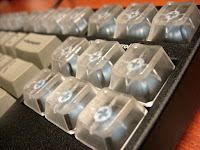I've already read a bunch of online reviews, looked over the Sailor, Edison, and Nakaya websites, and reviewed a number of online forum posts related to my candidate pens. I've even reached out and asked for expert cyber-advice in an attempt to help me choose a pen. There seems to be very good agreement about the quality and excellence of Japanese nibs made by companies such as Sailor and Nakaya (nib quality is really important to me, because I'm more interested in the actual writing experience than looks, design, materials, and filling mechanisms). In fact, Sailor nibs are very highly regarded and some people say that they are among the best in the world. Edison sources its nibs from a German supplier (at least that's what my internet research tells me), and those nibs are also highly regarded. That said, it seems as though most people favor Sailor nibs over Edison nibs. Moreover, I already have two German fountain pens: a Lamy Vista and a Pelikan M205; and I'm not too eager to try yet another German nib. By the way, the Lamy has an acceptable nib, and the Pelikan has a super smooth nib that I feel is excellent.
So . . . using nib performance and reputation as important deciding factors, I've taken the Edison Pearl off of my wish list for the time being. Don't get me wrong, the Pearl still looks really good to me, and it would be great to have a custom pen that is handmade in the United States. I just have a gut feeling that I should go with a traditional Japanese company that fabricates its own nibs.
Using the almighty dollar as another deciding factor, I've removed the "low price point" Nakaya pens off of my wish list. I just can't see myself spending THAT much on a pen, even though I appreciate the craftsmanship and inherent value in the ridiculously awesome Nakaya pens. If I had the patience and discipline to save 50 bucks a month in a pen fund, then maybe I would acquire one. But I don't. And I won't. So scratch the Nakaya. As a side note, if I win the lottery, then I might be willing to drop four stacks of high society on a "high price point" Nakaya. Yikes.
I'm making progress here. My next fountain pen will definitely be a Sailor Professional Gear. I simply need to choose the Imperial Black version or the Matte Black version, along with the nib size. Simple.
Forward to Part 3; Back to Part 1
Forward to Part 3; Back to Part 1












